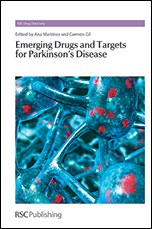At the tail end of last year we received this positive and perceptive review of ‘Science and art: the painted surface’ from Catherine Emma Nicholson at Chemistry World. This book was Edited by Antonio Sgamellotti, Brunetto Giovanni Brunetti and Costanza Miliani. If it inspires you to find out more about this publication, then further details can be found from our online bookshop.
We hope you enjoy reading this review article, and that you enjoy reading the book itself even more!
“This volume shows a global solution to a long-discussed problem: how to get scientists, art historians and conservators working together. The book presents a host of projects where collaboration has allowed all of these groups to learn from one another. Some chapters describe the science and techniques, useful for scientists wishing to work in a similar setting; others focus on the art, showing how the results of scientific studies have led to a deeper understanding of a corpus of artifacts, linking to particular cultural traditions. Unsurprisingly, given the editorial board of the book, Science and art gives the reader an overview of the diverse range of projects that Charisma (cultural heritage advanced research, a multidisciplinary conservation and restoration project) researchers have been involved with. The book shows a number of analytical techniques that are now becoming essential in conservation science. Charisma researchers, along with other scientific experts, used their expertise to reveal hidden depths in many famous works. The book discusses various techniques, focusing on non-invasive methods such as infrared reflectance, Raman spectroscopy, x-ray fluorescence and multispectral imaging as well as the more exotic synchrotron x- ray analysis. Science and art also provides an excellent read for art historians, who will instantly recognise the famous pieces that have been studied, while giving them insight into how a painting was constructed, what it is made from, or how the colours would have looked when they were freshly painted. I was struck by the editors’ choice not to only focus on European works, but to take a worldwide view, including chapters on Mayan manuscripts, Tibetan paintings and Japanese panels. This clearly shows that this blossoming research area requires even more bridges to be built, spanning research communities and forging stronger links between them.”













